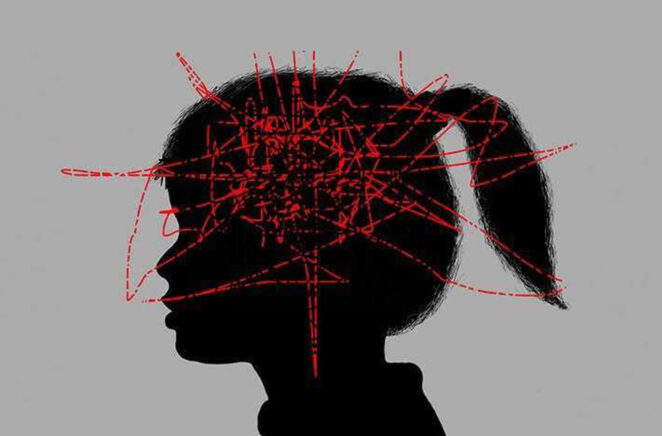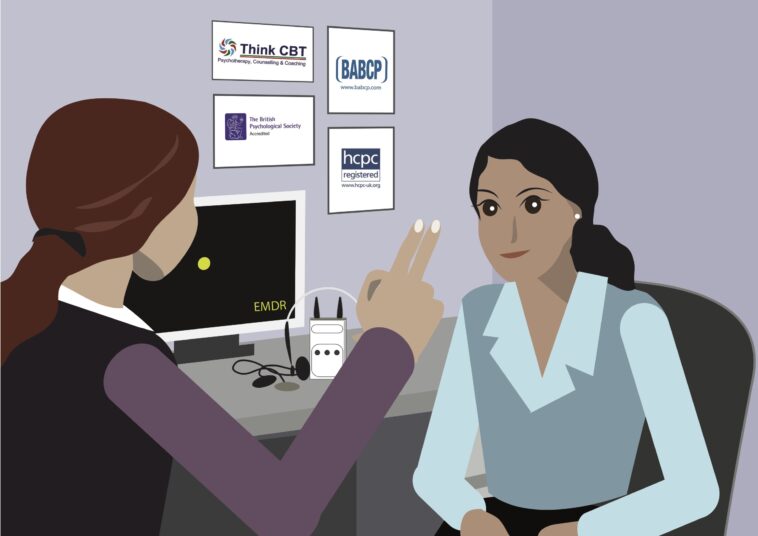Eye Movement Desensitisation and Reprocessing (EMDR) Therapy is a psychotherapy that reduces post-traumatic stress associated with traumatic incidents. We believe the therapy to be helping thousands of people with their struggles with handling anxiety. As the name suggests, the treatment is associated with eye movements to help the brain process the trauma. It enables the person to heal from the emotional imbalance disturbing their lives.
When a person undergoes trauma, the brain cannot process such information because of the overwhelming memory. Hence, the brain stores flawed memories. Because of this storage, various related or unrelated stimuli can elevate the reception the same as it did at the time of trauma.
The emotional well-being of the person gets disturbed. This EMDR therapy involves bilateral stimulation that guides the patient through the actions of the eye. It enables the brain to move the memory to another part of the brain that is more functional and related in comparison.

Simple Explanation of EMDR
EMDR therapy involves hand tapping, movement of the eye, and bilateral stimulation. These are natural options of treatments that have proven themselves to treat stress and anxiety. It lets the patient enter a safe place that cannot be said to be a trance. They individualize these sessions where they experience the release of unwanted energy and reach a stage free of judgment.
Here are five things to know before you go for your EMDR Treatment
1. It is Ok if it gets worse before it gets better – that is the process
Many people experience emotions going out of hand when they have started the session. The introductory stage is always vigorous. It will be no surprise if you experience the PTSD feelings rushing out. Or maybe you experience new ones. It is to be kept in mind that many people have experienced the manifestations rising. It is perfectly normal.
Everybody has a unique experience when they first have their EMDR therapy. It is imperative, though, that you should inform the condition to the therapist. People undergo the program and bear the worst because they know what is ahead. People have been talking of the healing power the treatment contains and are willing to go through such conditions to get their peace of mind back.

2. Ask Questions and Answer with Honesty
Before the therapy starts, therapists take an assessment of your experience. They decide whether the therapy suits your needs. There are specific criteria that a patient should have if seeking therapy.
There will be many instances in the process of asking you to describe the incident or trauma. It may lead you to revisit the incident again and again in your mind. And when the therapist asks about what it is, you have to be raw and honest. Mutual trust between the therapist and the patient is critical. When you open up, then only you can fully benefit from the treatment.
It not only helps you to uncover the situation well but also lets the therapist discover the progress.
3. Revisiting the Trauma
People have always misunderstood EMDR therapy as they believe that the patient has to undergo the recalling intensely. Let this article make a definite impression that the revisiting part only lasts a few moments. Then the stress decreases with each session. The patient will be kept in the presence of a skilled and equipped therapist trained with all the clinical techniques to overcome the circumstance and relieve stress.
At the early stage of the therapy, the patient being new to the revisiting stage may experience negative responses from the mind. The trauma may force him to confront the same feelings again. But in contrast with the long-lasting relief that turns out with the treatment, some moments of discomfort are nothing to fret about.

4. Phases of Therapy
The patient should beforehand know the phases that comprise the treatment. At first, the therapist tests the tolerance level of the patient. These tests establish the groundwork for the upcoming processes. They also teach you various techniques for coping with the urgent rush of emotions and how you can cope with high stress.
They assess which are the memories that trigger negative emotions in the person. We also know these as emotional stressors that are associated with the incidents. Evaluation of thoughts and memories is the next phase. The therapist can help alter the way your brain has perceived the event. The stimulation of eye movements comes into the picture and can vary according to the magnitude of the matter and the impact it has on the brain.
Thereafter, the therapist installs a positive thought into your mind. The positive should have the impact of veiling the negative feeling completely. This installation continues until the impact of negative feelings is nil. Every session ends with a relaxing technique that avoids further lingering of such thoughts.
5. EMDR Hangover
People feel emotionally exhausted after the sessions. You must have someone to come along with. Not only does the session leave you exhausted emotionally, but you may also experience physical fatigue. It is the downtime that needs to be taken care of. The need will be to communicate and socialize with someone. Divert the mind into something calm.
At this phase of time, you should have someone to talk to. This vicious circle of stress needs escaping with practical techniques taught to the patients during the assessment phase.

Bottom Line
Overall, the experience is going to soothe your mind. It will be highly positive. Although the initial sessions will make you a little uncomfortable, you will always come out stronger at the end. Thousands of people have found hope in the sessions. They can sense the progress themselves. There are various online EMDR therapy Dunedin that can help you change the negative painful feelings into constructive powerful ideas. There are different therapists with several years of experience in treating people with emotional and dysfunctional behaviors. Go ahead and remove the barriers hindering your path to becoming who you are today.




